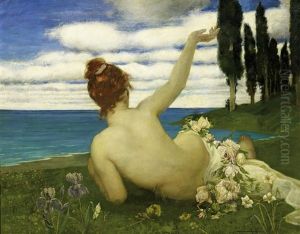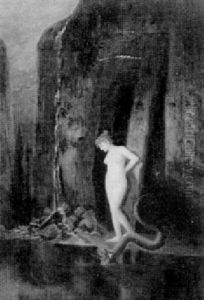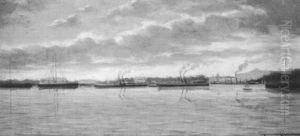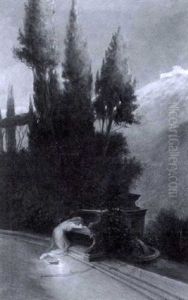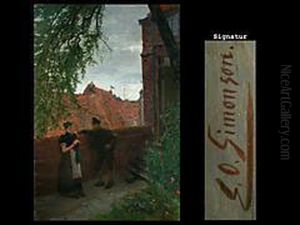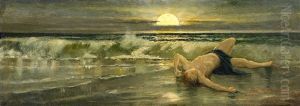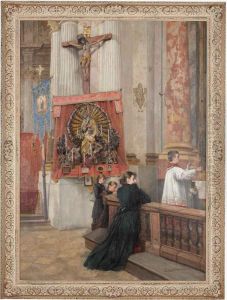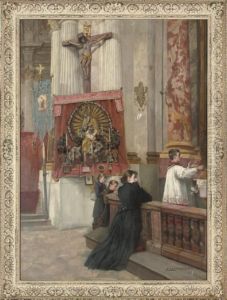Ernst Oskar Simonson-Castelli Paintings
Ernst Oskar Simonson-Castelli was a German painter and art professor who lived during the 19th and early 20th centuries. Born on October 17, 1847, in Dresden, Germany, he was a part of the artistic movements of his time and was known for his historical paintings, portraits, and genre works.
Simonson-Castelli initially studied at the Dresden Academy of Fine Arts, which was a prominent institution for the arts in Germany. His education there would have provided him with a rigorous training in drawing, painting, and the principles of art that were prevalent in the academic circles of the period.
Throughout his career, Simonson-Castelli held various positions of significance in the art world. He worked as a professor at the Dresden Academy of Fine Arts, where he influenced a generation of artists with his teachings. His role as an educator was crucial in the dissemination of artistic knowledge and techniques during that era.
As an artist, Simonson-Castelli was known to have a penchant for historical subjects, which was a popular genre in the 19th century, often reflecting the romanticized view of the past. His works would typically involve careful research and a strong narrative element. This genre allowed him to explore dramatic compositions, rich colors, and detailed characterization, which were appreciated by the public and the art critics of his time.
Despite his local success and contributions to the German art scene, Ernst Oskar Simonson-Castelli did not achieve the same level of international fame as some of his contemporaries. Nonetheless, his works were exhibited and gained recognition in various art exhibitions, contributing to the cultural life of the period.
Simonson-Castelli continued to paint and teach throughout his life until his death on January 5, 1922, in Dresden. His legacy as an academician and painter remains a part of the history of 19th-century German art. Although not as widely known today, his works are still of interest to art historians and collectors who study the period and its artistic output.
